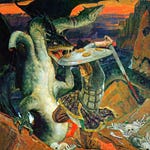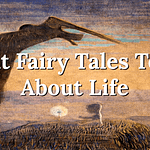“Pleasures conceived in the world of the senses have a beginning and an end and give birth to misery. The wise do not look for happiness in them.”
The Bhagavad Gita, translated by Eknath Easwaran
Of all life’s battles the greatest we fight is the one within. Each of us must struggle with the doubts, fears, and anxieties that accompany us as we navigate a world of challenge and change, in the skins of mortal creatures. Of the many sources of advice on how to attain inner peace in the face of life’s turmoil, one that is often overlooked in the West is the Bhagavad Gita. In this video we explore some of the timeless wisdom found in this 700 verse Hindu scripture that was composed over 2000 years ago.
“This is true knowledge, to seek the Self as the true end of wisdom always. To seek anything else is ignorance.”
The Bhagavad Gita, translated by Eknath Easwaran
The Bhagavad Gita can be seen as a guide to connect us with the divine core of our being, or what is referred to as the Self with a capital ‘S’, or in Hinduism as Atman. Atman is the unchanging, timeless essence found within every creature and the purpose of life, according to Hinduism, is to realize our Atman. By doing so we transcend our ego, actualize our divine personality, and attain a state of abiding joy and inner peace.
Hinduism, asserts that the Self, or Atman, is a manifestation of the Godhead, the divine ground of all being or what Hindu’s call Brahman. Brahman, in other words, is God transcendent, while Atman, is God immanent, or the God within. But it is important to note that in Hinduism there is no real distinction between God immanent and God transcendent, or as Eknath Easwaran explains:
“In the climax of meditation, the sages discovered unity: the same indivisible reality without and within. . .The Chandogya Upanishad says epigrammatically, “Thou art That.” Atman is Brahman: the Self in each person is not different from the Godhead.”
Introduction to The Bhagavad Gita, Eknath Easwaran
In our secular and scientific age some will dismiss any call to connect to the divine as misguided and wishful thinking. It is interesting to note, however, that Carl Jung, who visited India, and was influenced by Eastern philosophy, also maintained that the primary purpose of life was to connect to the Self, or what he called “the total, timeless man” (Carl Jung, Collected Works Volume 16). Jung saw the Self as part of the psyche, specifically an archetype of the collective unconscious, and like the Gita he suggests that the Self has a divine, or what he called, a numinous essence. Or as he writes in Volume 18 of his Collected Works:











